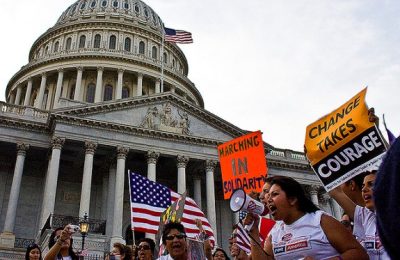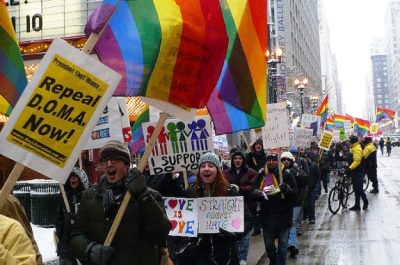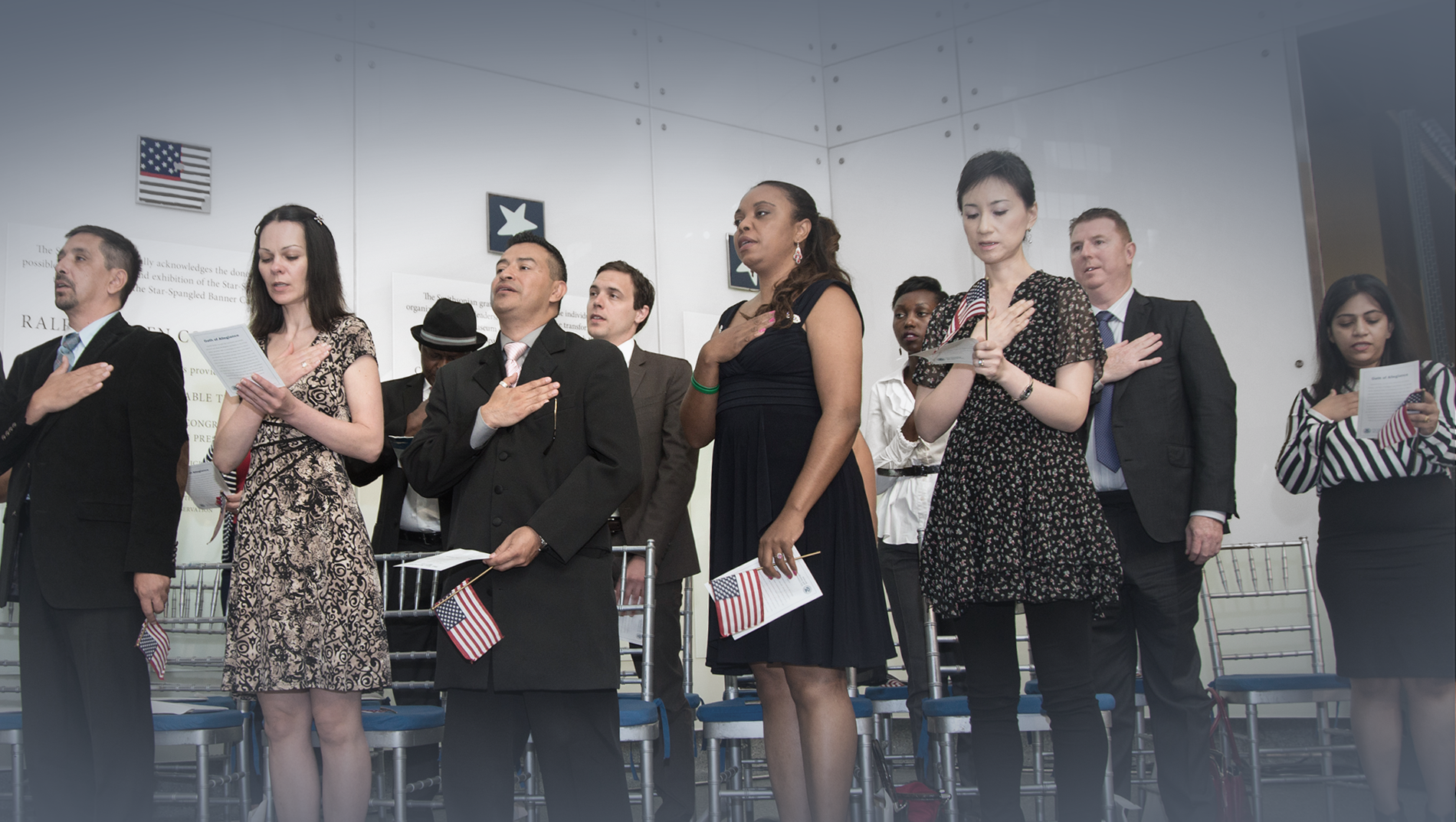Immigration 101
The U.S. immigration system is complex and can be difficult to understand. These resources provide key data points, historical information, and background on hot topics in immigration. Learn the basics about immigration. Immigration in the United States is complex and ever-evolving. Start here to understand the fundamental aspects of immigration policy, its history, and its impact on both individuals and the country at large. Learn commonly used terms about immigration law and how the U.S. immigration system is designed. Explore layered topics like how and whether immigrants can become citizens, as well as what individual protections look like under the law.
How the United States Immigration System Works
- How the Immigration System Works
- June 23, 2024
U.S. immigration law is very complex, and there is much confusion as to how it works. This fact sheet provides basic information…
Read More
Birthright Citizenship in the United States
- Birthright Citizenship
- October 16, 2024
This fact sheet explains birthright citizenship, the Fourteenth Amendment, and its interpretations. Who is…
Read More
Asylum in the United States
- Asylum
- August 27, 2014
Asylum seekers must navigate a difficult and complex process that can involve multiple government…
Read More
New Americans Are Among the Nation’s Top Entrepreneurs, Report Says
Anyone who fails to recognize that immigration fuels a sizable chunk of the U.S. economy would be well-advised to read the report released this week by the Partnership for a New American Economy, entitled The “New American” Fortune 500. According to the report, two in five Fortune 500 companies (41%) “had at least one founder who was either an immigrant or raised by someone who immigrated to the United States.” Collectively, these companies had $4.2 trillion in annual revenues and employed 10.9 million people worldwide. This is compelling evidence, argues the report, that “immigrants and their children create American jobs and drive our economy.” Yet, the report concludes, our immigration laws all too often force immigrant workers and entrepreneurs away, rather than welcoming them. As New York City Mayor Michael Bloomberg recently put it, that amounts to “national suicide.” Read More

Immigration Tops Economy as Most Important Issue for Latino Voters
According to a poll released yesterday, “U.S. immigration policy” beat out “economy and jobs” as the issue most important for Hispanic voters. The poll, conducted by independent research firm Latino Decisions, asked 500 registered Hispanic voters to name the most important issues facing Hispanics. 51% of respondents said “immigration;” 35% said “economy and jobs;” and 15% said “education.” Pollsters suggest voters’ “direct and personal connection with the problems of the undocumented” as a reason immigration topped the economy—personal relationships that even “affect the political choices of a second or third generation of Latinos born here.” With reform efforts stalled in Congress, many are wondering what kind of political choices Hispanic voters will make in the upcoming 2012 election cycle. Read More

Immigration Tops Economy as Most Important Issue for Latino Voters
According to a poll released yesterday, “U.S. immigration policy” beat out “economy and jobs” as the issue most important for Hispanic voters. The poll, conducted by independent research firm Latino Decisions, asked 500 registered Hispanic voters to name the most important issues facing Hispanics. 51% of respondents said “immigration;” 35% said “economy and jobs;” and 15% said “education.” Pollsters suggest voters’ “direct and personal connection with the problems of the undocumented” as a reason immigration topped the economy—personal relationships that even “affect the political choices of a second or third generation of Latinos born here.” With reform efforts stalled in Congress, many are wondering what kind of political choices Hispanic voters will make in the upcoming 2012 election cycle. Read More

Pending a Resolution of DOMA, Immigration Judges Should Exercise Discretion to Stay Removal Cases
BY BETH WERLIN AND VICTORIA NEILSON To date, five states plus the District of Columbia celebrate marriages of gay and lesbian couples and several other states honor such marriages. In addition, five countries, including Canada, permit marriages of gay and lesbian couples and at least fourteen additional countries recognize same-sex relationships for immigration purposes. Yet, because the U.S. immigration agencies rely on section 3 of the Defense of Marriage Act (DOMA)—defining marriage as a union between one man and one woman—lesbian and gay U.S. citizens and lawful permanent residents are barred from obtaining immigrant visas for their spouses, visas that are available to heterosexual U.S. citizens and residents with foreign-born spouses. Gay and lesbian noncitizens also are precluded from obtaining other immigration protections, including relief from removal, based on a marriage to a U.S. citizen or permanent resident. As a result, families are separated and spouses of U.S. citizens and lawful permanent residents are deported from the United States. Read More

Pending a Resolution of DOMA, Immigration Judges Should Exercise Discretion to Stay Removal Cases
BY BETH WERLIN AND VICTORIA NEILSON To date, five states plus the District of Columbia celebrate marriages of gay and lesbian couples and several other states honor such marriages. In addition, five countries, including Canada, permit marriages of gay and lesbian couples and at least fourteen additional countries recognize same-sex relationships for immigration purposes. Yet, because the U.S. immigration agencies rely on section 3 of the Defense of Marriage Act (DOMA)—defining marriage as a union between one man and one woman—lesbian and gay U.S. citizens and lawful permanent residents are barred from obtaining immigrant visas for their spouses, visas that are available to heterosexual U.S. citizens and residents with foreign-born spouses. Gay and lesbian noncitizens also are precluded from obtaining other immigration protections, including relief from removal, based on a marriage to a U.S. citizen or permanent resident. As a result, families are separated and spouses of U.S. citizens and lawful permanent residents are deported from the United States. Read More

More Immigrants are Educated, Skilled Than Ever Before, Report Finds
A new report released by the Brookings Institution dispels the myth that all immigrants are unskilled, uneducated, and illegal. The report, entitled The Geography of Immigrant Skills: Educational Profiles of Metropolitan Areas, finds that the share of working-age immigrants in the United States who have at least a bachelor’s degree is greater than the share who lack a high-school diploma. Moreover, immigrants with college degrees outnumber immigrants without high-school diplomas by wide margins in more than two-fifths of the nation’s 100 largest metropolitan areas. Read More

Filed Under “M” for “Myth Busted”: Unauthorized Immigrants Pay Taxes, Too
Sadly, myth and misinformation continue to be a major part of the immigration debate. One of the biggest myths perpetuated by restrictionist groups is that the roughly 12 million unauthorized immigrants currently living in the U.S. use a variety of public services yet paying nothing in taxes. Hard data recently released by the Institute for Taxation and Economic Policy (ITEP) however, backs up what economists have been saying for years—undocumented immigrants do, in fact, pay taxes. A new report released yesterday by the Immigration Policy Center (IPC) uses ITEP data to show that unauthorized immigrant households paid a whopping $11.2 billion in state and local taxes in 2010 alone. Read More

Second Annual DHS Progress Report
In its second year under the Obama Administration, the Department of Homeland Security (DHS)—which is responsible for the nation’s three immigration agencies (USCIS, CBP, and ICE)—continues to struggle with its competing missions of providing immigration benefits and enforcing immigration laws, all within the context of an outdated and broken immigration system. Over the past year, while waiting for Congress to act, the Administration has increased its emphasis on enforcement and deportation and denied its ability to provide administrative relief. This report finds that, while DHS has made significant progress in some areas, there is much room for improvement. The report recommends that DHS act in line with its own stated priorities and exert its executive authority to bring about much-needed reforms that can be done in the absence of Congressional action. Read More
Make a contribution
Make a direct impact on the lives of immigrants.

